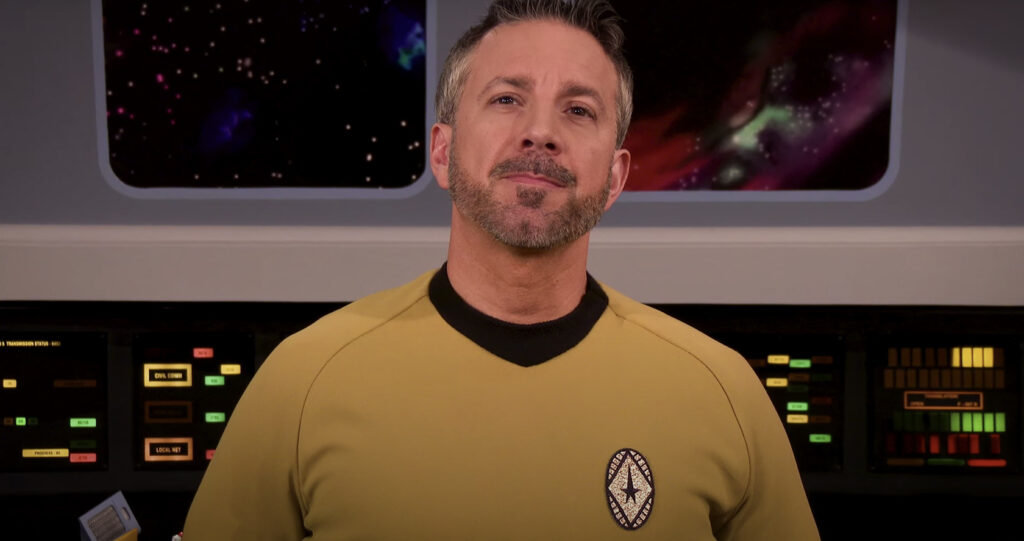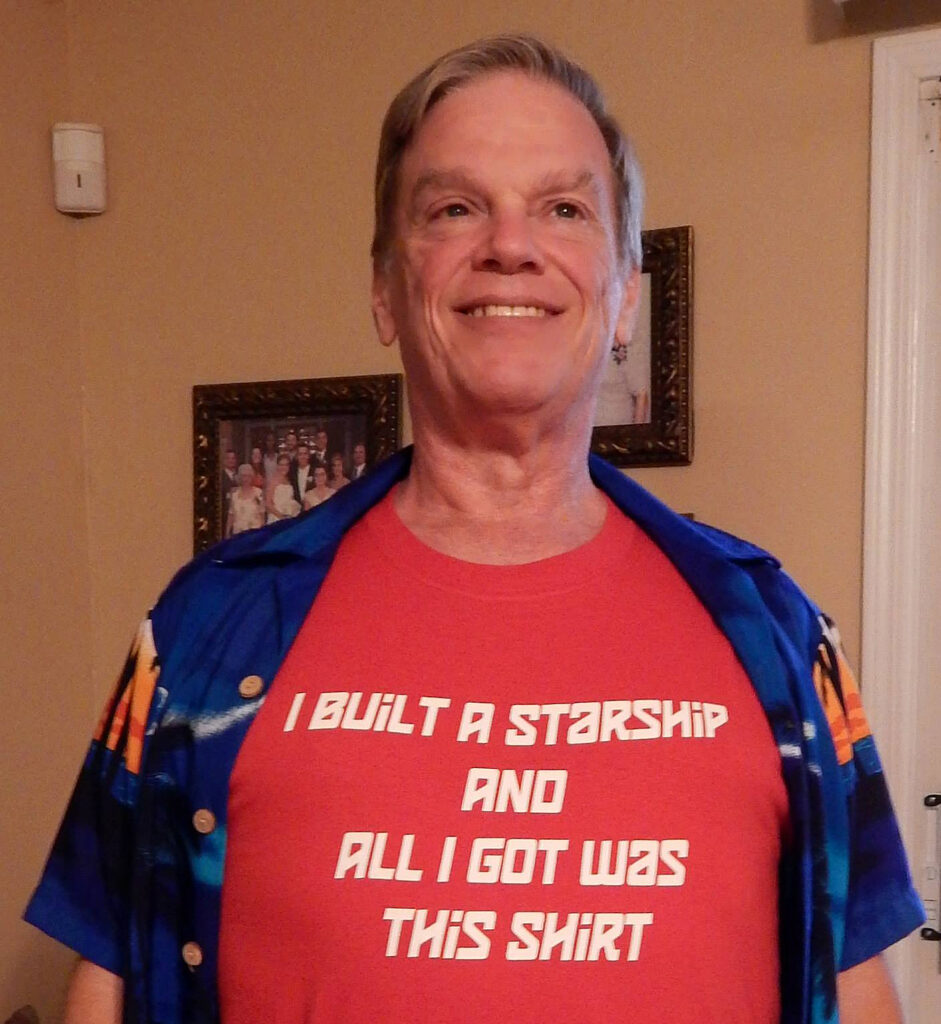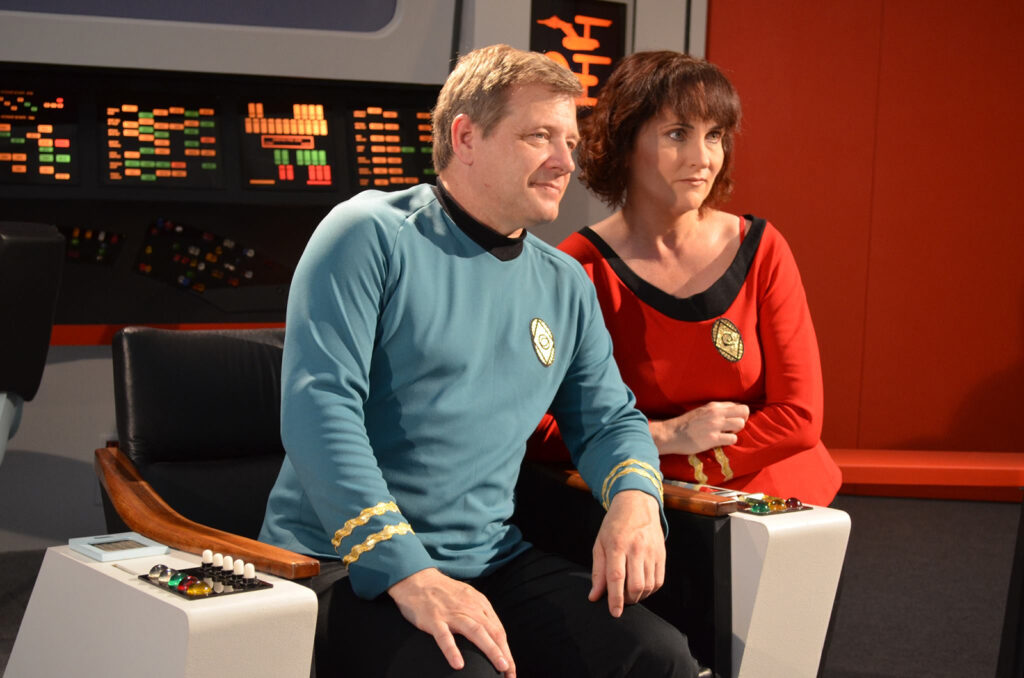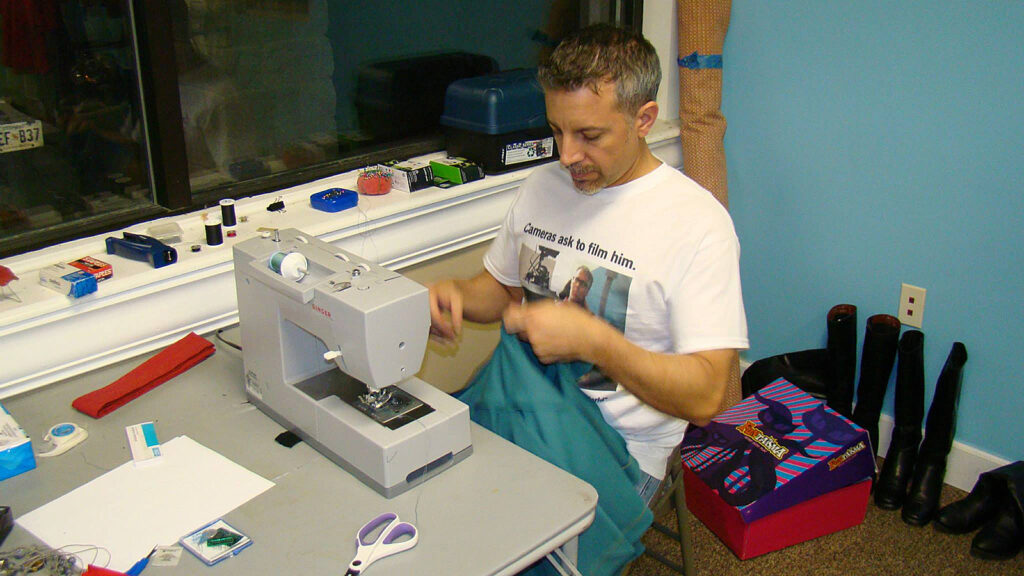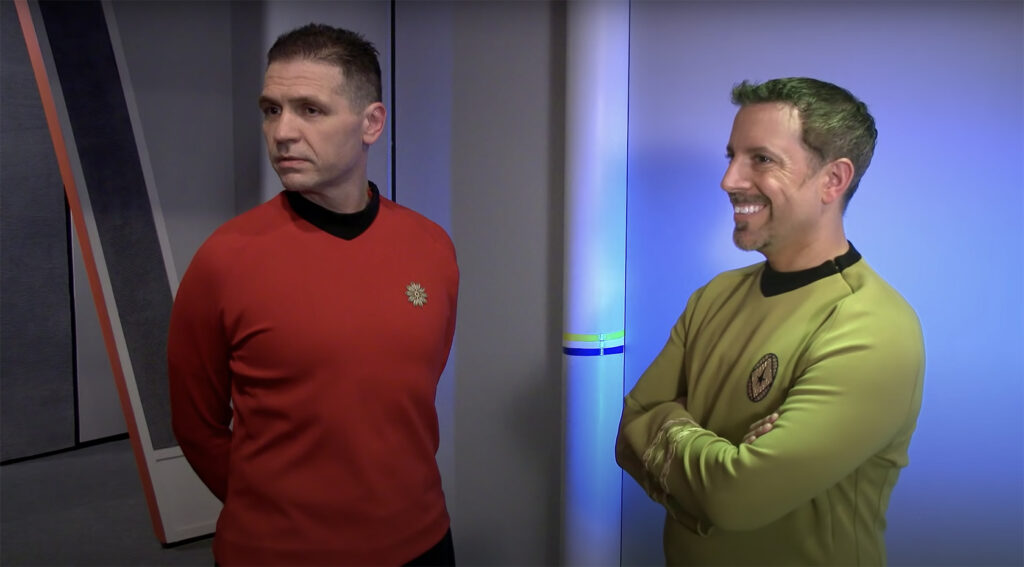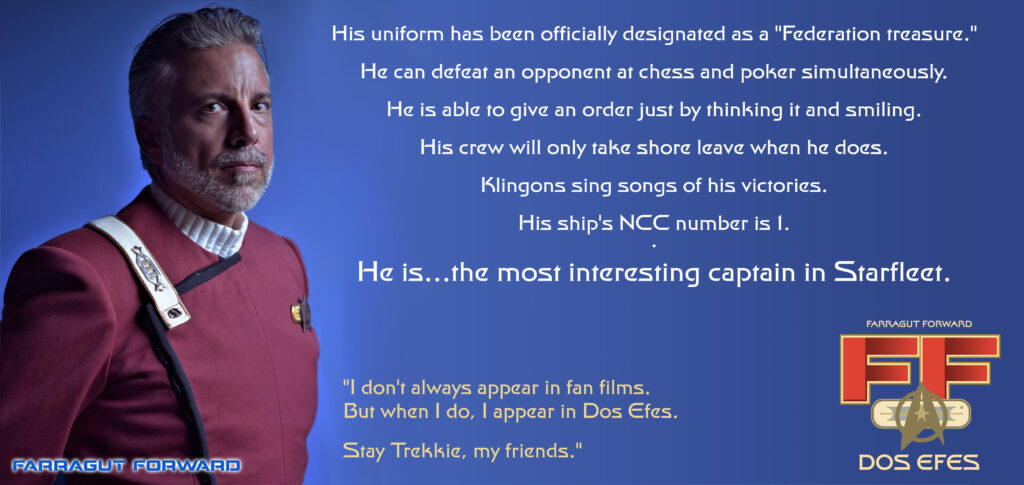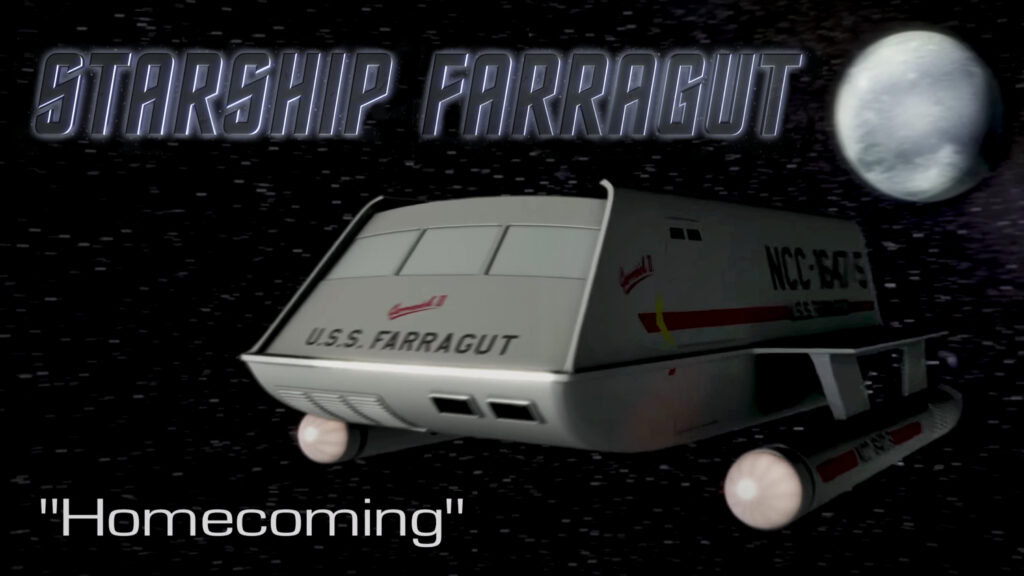
Last time in Part 1, we celebrated the highly-anticipated release of “Homecoming,” the finale of the long-running Trek fan series STARSHIP FARRAGUT, by interviewing show-runner JOHN BROUGHTON, writer PAUL R. SIEBER, and post-production supervisor and composer STEVE SEMMEL. We found out which elements delayed the completion of the film, what it was like shooting scenes with the legendary STAN LEE, and a whole bunch of other stuff that I’m not going to bother to recap because we’ve still got so much great interview left!
But before we dive into the conclusion, I’d like to recommend (if you’re interested in Starship Farragut) that you check out this 3-part blog covering the fascinating history of this venerated fan series from 2004 – 2016. And definitely watch the finale “Homecoming” if you haven’t already…
For anyone interested in the new sequel series, FARRAGUT FORWARD, I’ll be covering that soon with John and his director in an upcoming blog. But for now, let’s continue to celebrate this wonderful fan series with a question that goes back to the very beginning…
JONATHAN – I’ve always wondered: what made you choose the U.S.S. Farragut rather than one of the other major starships like Potemkin or Lexington or Republic?
JOHN – When I first started working on this project, it was going to be called Starship Excalibur. But then I learned that JOE KEREZMAN was doing his own fan film called STAR TREK: EXCALIBUR. And he reached out and said, “If you change your name to any of the other ships, I’ll make you—gratis for life—all the chest patches that you need.” And I said okay. I wasn’t that married to it.
So I looked at all of the patch designs that Joe had created, and the Farragut, which has an oval patch design—I thought that will be easy to sew, since I was making all the costumes myself—coupled with the Navy tie-in because I’m a veteran of the U.S. Navy, opted with the Farragut. Joe supplied me with one batch of patches, and that was it. But it was enough for what we needed, until we had our own embroiderer doing the patches for our project. All in all, I’m glad we went with the Farragut.
JONATHAN – So once you’d decided that you wanted to make a fan film, what did you do next?
JOHN – Initially when I started, I pulled in my dad, JOHN BROUGHTON, SR., and other friends, and then it just kinda grew as time went on. We were able to get professionals involved in the project, then we got our first studio in St. Marys, GA…which was much smaller than the Kingsland, GA space that the sets are now in. A lot of the initial sets were built by my father, then we had other volunteers that came on board and helped out.
JONATHAN – Like MICHAEL BEDNAR…who became your first officer, Commander Robert Tacket (one of my favorite characters in all of fan films, by the way).
JOHN – Oh, that’s great! Yes, Mike got involved early on. He wasn’t initially going to be in it, but after he saw the series trailer that we filmed in 2005, he just thought it was the coolest thing, and he was totally on board. So at that point, I made him the first officer character.
JONATHAN – So, Paul, how did you first get involved in Starship Farragut?
PAUL – I hadn’t been to any kind of convention in a decade or more but saw one was up in Baltimore, so I thought I’d give it a shot. I’d seen the STARSHIP EXETER fan film (first I had ever heard the term “fan film” before) and found out the NEW VOYAGES folks were going to be at the con, so I headed up for the day. I met John Broughton there.
At the time, I really didn’t have much to contribute to either show, except as labor, and the New Voyages folks invited me up to help with construction and assembly of sets and such. John spoke about doing a similar show, but in the DC area, and it’s easier than a 9 hour drive to the New Voyages sets in upstate New York, so I agreed to talk about it and help. John is a great salesman! I started building some set pieces in my garage, based primarily on “hey that looks neat” criteria; blueprints be damned.
JONATHAN – What were some of your biggest challenges as you tackled the first few episodes?
PAUL – Honestly, the biggest challenge of all was that we had no idea how to do any of this! New territory completely. Heck, I hadn’t done theater since college (back in the stone ages) and never really did any behind the scenes stuff.
Strangely, though, after a week at the New Voyages set laying carpet, painting, and holding a boom mic, I was the fan film vet of the team! LOL
JONATHAN – What do you think made Starship Farragut stand out from other fan series?
PAUL – Yes, we were playing “Trek,” but loosely…we created our own mythology, our own stories, original scores, new ships, new effects, new characters. We didn’t try to just recreate what others had done; we did something new, that just happened to exist in that universe.
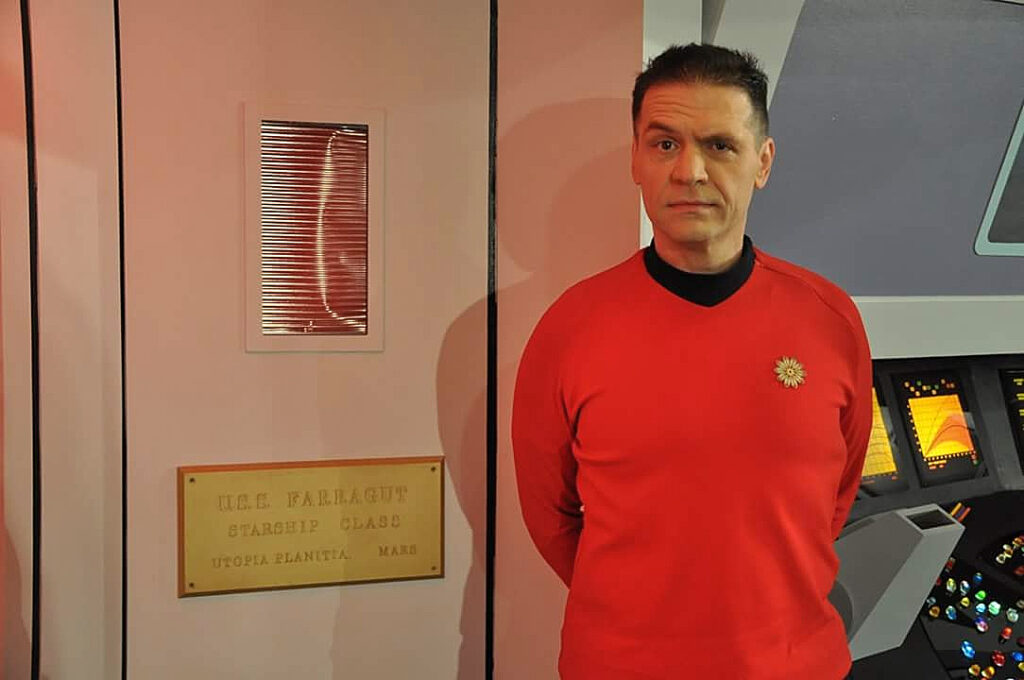
JONATHAN – What were your biggest challenges as you tackled your first few episodes?
JOHN – For me, it was the acting. It took me a few years to really understand the importance of acting and the prep work. But when you’re doing everything from production management to wardrobe to set construction and props and all the logistics involved in doing a fan film, it’s a lot. And I think a lot of Star Trek fans mean well, but they don’t fully comprehend what all is needed. And the acting craft needs to be taken seriously.
JONATHAN – So was your challenge in finding people who knew how to act or in taking non-actors and trying to get good performances out of them?
JOHN – For us, it was finding people who could act and even just understanding the acting craft. And I think that’s a challenge with most Star Trek fan films. Also, while I ultimately think we had good scripts, just finding a good story was a challenge. And then refining those scripts down from two hours to manageable 45-minute episodes was another hurdle.
JONATHAN – After more than a decade working on Farragut, how has it changed you as a person?
JOHN – It definitely taught me that I wanted to do more behind-the-scenes, I wanted to be involved in directing. And I think getting the foundation as an actor really helped me….because I had no formal training. But this was on-the-job training, learning the ropes. And I’ve literally done everything—I’ve done sets, I’ve done props, I’ve done costumes, I did craft services, I even learned how to do make-up on actors. I bought the camera equipment and learned the film stuff. The only things that I haven’t yet done are CGI and musical score.
It’s definitely changed me, and it’s provided an avenue in which I was able to win federal government contracts to do film work—training and public service announcements for the U.S. Army Department of Veteran Affairs and for the Pentagon.
JONATHAN – Wow! How about you, Paul? How has working on Farragut helped you grow as a person?
PAUL – I learned how filmmaking worked, and more importantly, how to yoke strengths and allow others to take over things. No way we can do everything ourselves—building a team was key, and John was a recruiter at heart ! He sold this concept to folks way more experienced than him or me, and they came on to really do some amazing things.
I also found out what I liked, and what I didn’t. I didn’t like producing or fundraising. I couldn’t make a costume if it would have saved my life. I wasn’t fond of directing, and honestly, wasn’t very good at it. Building big sets wasn’t something I had the time or space to do, but I liked building a “key set piece” or major prop. But I found that I loved acting and writing, so I decided to focus on that.
So for me, Farragut helped me become a writer. I’d never thought of that before, but it is a passion of mine. It also reintroduced me to the acting community, and that’s why I can now call myself a professional.
JONATHAN – Is there any one episode of Farragut that you’re most proud of?
PAUL – I am proud of them all, but I really can only watch “The Captaincy” for the historic significance. It’s pretty painful to see. I REALLY had no idea what I was doing!
As a writer, I like the fact that I was able to create a set of interconnected stories, individual tales that play off each other into one longer story. MARK HILDEBRAND’s “For Want of a Nail” was a triumph, and a great story…so working from that, the series of episodes I wrote followed through that as a new story, using the history that Farragut itself had created.
JOHN – For the live-action, not the animated, my favorite is “The Price of Anything” with “The Crossing” coming in as second.
JONATHAN – And what is it about “The Price of Anything” that makes it your favorite?
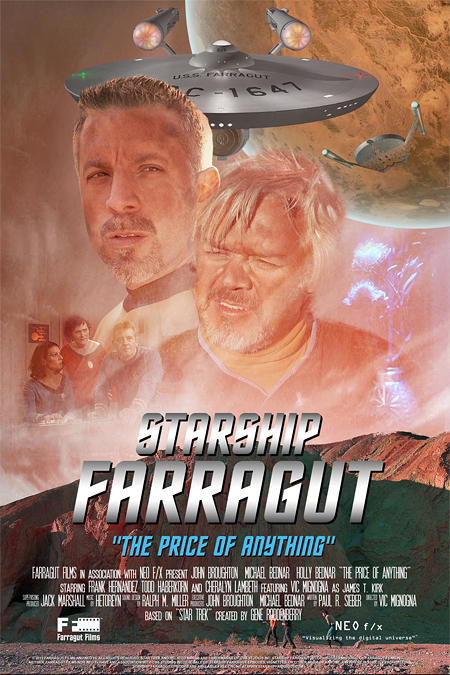
JOHN – Well, for me, I thought it was a great story, a universal story about father and son who were estranged and then are thrust together on a mission. I’ve shown this film to people who didn’t even know anything about Star Trek, and they were able to follow it because the story is so universal. I also I thought it was a great experience filming it and that my acting was one of my best performances. And we filmed on location in California, so you had some of those great cinema-style shots that were in the film. It’s just a great story overall, and you see Tacket battling a Romulan ship and using a really cool tactic to overcome that adversary. I just thought on that episode we were firing on all cylinders.
JONATHAN – That episode was directed by VIC MIGNOGNA of STAR TREK CONTINUES. And you once wrote that Vic was the one who brought out that amazing performance from you, John, correct?
JOHN – Absolutely. Vic is an acting director, and he did a really good job. When he took on that role, I promised him that I would know all my lines backwards and forwards. And the first day we did a read-through, on the first day we got the sets together for filming, everyone had their script, and I threw mine down on the floor—deliberately down to his feet. I was making a non-verbal gesture that I had owned up to my promise that I knew all my lines. And Vic just kinda looked at me and smiled. Because I was so well-prepared, he was able to work with me on a whole other level as an actor…something that doesn’t often happen in fan films with people who don’t have an acting background.
JONATHAN – Okay, we haven’t heard from Steve in a while, so let’s shoot a question his way. In addition to being post-production supervisor, you originally got involved just to write some of the musical score. So what was your process in doing that?
STEVE – The first thing that I needed to realize when I started is that we were already two years behind…so I’d better not go trying to reinvent the wheel! Anything that would be a time saver would be in order, like reusing as much existing Starship Farragut music as possible. The second thing I discovered is that we already had a theme song written for the film. Excellent! Another time saver, less work for me.
So I started by putting all existing and familiar Starship Farragut music in the teaser and then introduced AMY BERRY’s song in the Act 1 opening with a string arrangement that I heard in my head. Then I would switch back and forth, all scenes with Hope would be based on Amy’s Remember Me. Everything else would be reused or reworked existing Farragut music where I could find something that fit.
So for the scenes with Hope, the process was as follows: find appropriate TOS music for the scene, transcribe the arrangement from the La-La Land Records Star Trek music recording, then surgically remove one melody line from the Alexander Courage or Fred Steiner score and replace it with Remember Me. I can imagine that that kinda sounds like a scientific experiment done with Amy’s song. Well yeah, actually it was a scientific music experiment done with Amy’s song, and it worked! No animals were harmed.
I’m really glad we had some live recorded music in this episode—including Amy, KEVIN PALM on bagpipe, BASIL RODRIGUEZ on trumpet, and myself on saxophone. We were also very lucky to have both CARL HAYES and HETOREYN volunteering to take on one scene each. I thank all of them tremendously. I also want to thank ADY FARBER for assisting me with the TOS arrangements and giving me general advice on scoring. That was very helpful.
JONATHAN – I realize that we’ve talked a lot about post-production, but we haven’t really talked about production itself. After making so many fan films, did the shoots go fairly smoothly this time out?
PAUL – I would not call this one smooth at all—tight deadlines at some locations, and availability of personnel, logistics changes, directorial changes (me filling in at times). We shot all over the place…on the sets for a week, local parks, MIKE and HOLLY BEDNAR’s yard, staged at my house, filmed green screen in John’s garage, a few days at Frank Lloyd Wright’s Pope-Leighey House (first and only production to ever film there, by the way!). This one was a doozy, but the end result is great. Very proud of it.
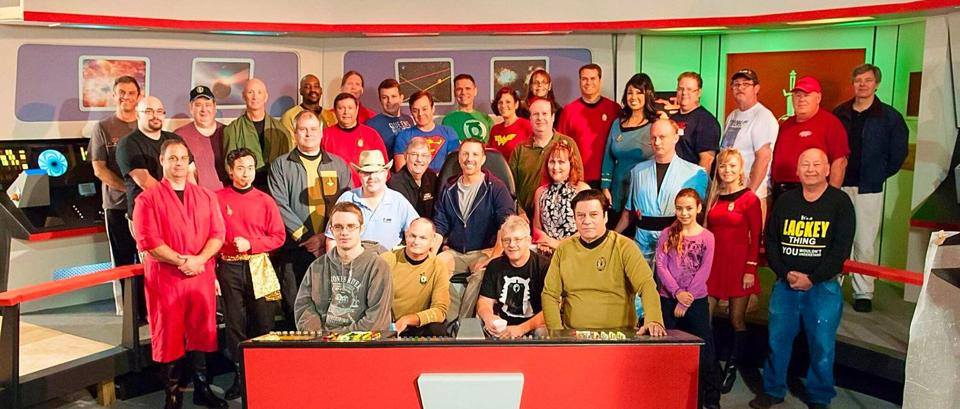
JONATHAN – Wait, were you all down in Kingsland, GA for a full week???
JOHN – Yeah, everyone but DICK DYSZEL was there the entire week.
JONATHAN – That’s a LOT of people all taking a week’s vacation to make a fan film!
JOHN – Yeah, but they knew well in advance when we were going to be filming this. I mean, we may have had a couple that only showed up on the days needed, but those would have been the locals. But the people who weren’t from the area, they were there for the whole duration.
JONATHAN – That must have been really challenging to make sure that you had that many people showing up at the same time and not canceling. Was that you herding the cats, John, or was there someone else in charge of that?
JOHN – CASE AIKEN was our production manager, so he helped with that.
JONATHAN – Well, I’m very impressed with your team’s commitment…especially after so many years! And speaking of which, this next question is more for the two “old timers” John and Paul (like the Beatles!). Looking back over the entire run of Starship Farragut, what would each of you say is your single fondest memory?
JOHN – Making lifelong friends with people. These folks have become more like family over the years.
PAUL – Friends. Making lifelong friends, who are now like family.
JONATHAN – Wow, you guys literally just typed the exact same answers simultaneously!
PAUL – It’s all true.
JONATHAN – Well, speaking of family, your production seems to have been a “nexus” for a veritable parade of members of the fan film community who have since gone on to be in countless other fan films and series: FRANK PARKER, JR., LEZLIE SAWYER, LARRY FLEMMING, VICTORIA AVALON, DAN SCANLON, DAVID AGRONSONIS, along with many of the Kingsland “staples” like ROYAL WEAVER and SAM ROOKS. Plus you helped to launch numerous other fan series like STAR TREK CONTINUES, DREADNOUGHT DOMINION, TREK ISOLATION, and of course, the upcoming FARRAGUT FORWARD.
How does it feel to be the one responsible for so many of these people who went on to do so much in the world of Trek fan films?
JOHN – It’s great! It’s like I was telling my dad, who’s built so many of the sets from the original series down in Georgia. And I told him that these things he’s built and continues to build will be in existence for a very, very long time. And there’s so many fans and filmmakers who appreciate his work. So yeah, I feel honored to be one of the godfathers, if you will, of Star Trek fan films…and help provide a means for all these people to tell their own stories of Trek and play in this world in which we all grew up and watched for so many years on TV. You can be participatory instead of being just a viewer.
JONATHAN – Wonderful words, John. Paul and Steve, any final thoughts to share with the fan film community?
STEVE – It was truly an honor working with everyone on “Homecoming,” and I thank John for letting me work on his film. I’m glad I’ve had an opportunity to meet all the friends I’ve made here.
PAUL – Fan films live. And I am always glad to see them. There are no such things as bad fan films. Most folks making them have never acted a day in their lives (nor should they), nor have they held a camera, or directed a scene. Who cares! They are about having fun!
The only thing I can say is to NOT take them so seriously. It is not a competition, and it is not about accolades or awards, or money, or becoming a pro. Fan films are for fun. If they stop being fun, then stop doing them.
For me? I’d like to see what the future has in store…and see what John Broughton has up his sleeve!

